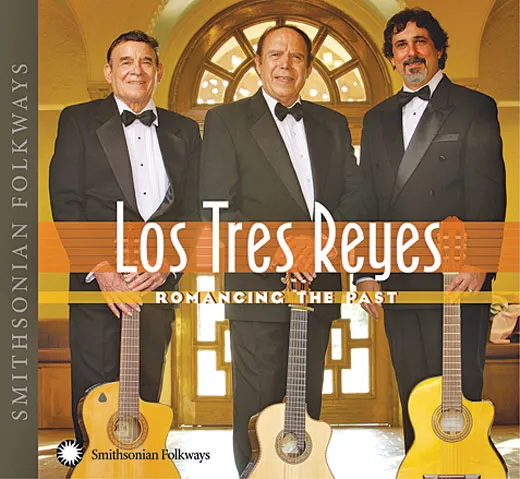Los Tres Reyes Remember The Age of the Tríos
The Latin American artists discuss how their career began over 50 years ago
“Ódiame” (“Hate Me”) is a love song, the plaint of a man who would rather be hated by his lover than forgotten. It is the signature song of Los Tres Reyes, the last of the great tríos románticos that dominated Latin American music in the 1950s. Founders Gilberto and Raúl Puente have recorded it for their new album Romancing the Past, released this spring by Smithsonian Folkways Recordings. The album features not only the lush harmonies that epitomize the genre, but also Gilberto’s virtuosity on the requinto, a small, high-pitched guitar. Smithsonian Magazine’s Aviva Shen spoke through a translator with Gilberto Puente and current third member Bebo Cárdenas about the band’s origins and the legacy of the tríos. Evita Cárdenas, daughter of Gilberto and wife of Bebo, translated.
How did the band get started?
Gilberto: We got started musically in 1957, accompanying a Puerto Rican singer named Virginia Lopez. We were in Mexico City at the time, and we read in a newspaper that Los Panchos, the historical founding trío of the bolero, had split up in Buenos Aires. So we went to Hernando Aviles [the lead singer and founding member of Los Panchos] to look for him and the three of us started rehearsing together. Looking through Hernando’s piano bench, I found some sheet music. It was this Peruvian waltz called “Ódiame”. Hernando Aviles, who was already with [a record label], was very good friends with the label director; he showed him the song and they decided to record it. We recorded “Ódiame” and another song “Decídete.” That was our first recording and it was an immediate hit. It went on to the radio stations and became number one on the hit parade. In 1958, we sold 10 million copies.
What was it like to be part of this heydey of the tríos? What was the music scene like at that time?
Gilberto: It was a very competitive scene. Everyone was looking for the best songs and the best arrangements. During that time, there were literally hundreds of tríos performing throughout Latin America. Each trío used to have a style that was symbolic and distinct. I had a very particular style playing the requinto and it was all based on virtuosity and speed. So when I arranged “Ódiame,” it just became a very particular style to identify the trío. Although there were many tríos, there were not many with unique styles that stood out. Everyone else was older, and we were the new kids on the block. We were able to stand out because of that style.
Evita: It was viewed poorly for you to imitate or try to sound like another trío. It was frowned upon if you played someone else’s song. You arranged it very differently. If a trío made a hit song, even though it belonged to other composers, [it had to be] a very different interpretation of the original song, based on the singing ability of the band, the way they harmonize, and the musical arrangements. So they were very protective of their style and their arrangements—even just a little phrase.
Your group is so grounded in family ties. Can you talk about how family influences your music as a group?
Bebo: Because Gilberto and Raúl are twin brothers, they [have] similar voices. So for the blending and the harmonizing, that’s a fundamental. You get a richer, more comprehensive blending with sibling voices. Since they’ve been working together and playing together since they were 8 years old—they’re 75 now—they know each other and have the same style. They look at each other and know what the other is doing. They’ve been able to achieve a string duo with an evenness and preciseness that has not been matched by anyone else. It becomes an intimate musical conversation.
/https://tf-cmsv2-smithsonianmag-media.s3.amazonaws.com/accounts/headshot/ATM-aviva-shen-240.jpg)

/https://tf-cmsv2-smithsonianmag-media.s3.amazonaws.com/accounts/headshot/ATM-aviva-shen-240.jpg)